Estadio Olímpico de Sevilla (Estadio La Cartuja)
| Capacity | 68 887 |
|---|---|
| Country | Spain |
| City | Seville |
| Clubs | Real Betis Balompié |
| Inauguration | 05/05/1999 |
| Construction | 1997–1999 |
| Renovations | 2024–2025 |
| Cost | €120 million |
| Design | Cruz y Ortiz Arquitectos |
| Address | Puerta 5, 4ª Planta, Isla de la Cartuja, Sector Norte, 41092 Sevilla |
Advertisement
Estadio Olímpico de Sevilla – stadium description
What is the Estadio La Cartuja like in a nutshell?
Estadio La Cartuja was built with the idea of hosting the Olympic Games, which Sevilla, however, failed to achieve. It was also intended that the city's two biggest clubs, Betis and Sevilla FC, would play there, but these ultimately preferred to continue using their own venues, and the monumental stadium remained empty after its opening...
Although not entirely, because despite the lack of a permanent host, it has hosted quite a few important events: the World Athletics Championships (1999), the UEFA Cup final (2003), games of the Spanish national team, the Copa del Rey finals or Euro 2020 matches.
The venue has also hosted matches of the Davis Cup tennis tournament as well as music events, with Manuel Carrasco's concert in 2023 attracting a record 74,345 people.
In 2030, the venue is expected to be one of the venues for the World Cup, so the decision was made to undertake the first major reconstruction: between 2024 and 2025, the rarely used athletics track was removed, the pitch was lowered and additional stands were added in the lower part.
Thanks to the modernization, the facility was given a football-specific character, and its capacity increased from 57,600 to almost 69,000 spectators, placing it among the largest stadiums in the country.
The stadium has an octagonal form from the outside, enhanced by four corner annexes that give the whole building more dynamism. The stands are covered by an oval roof, reminiscent of a spread-out flamenco fan.
To minimize the impact on the flat landscape, the building has been partially dug into the ground. Inside, a huge “window” in the style familiar from American stadiums, facing south – toward the city – catches the eye.
Why was Estadio La Cartuja built?
Seville's Olympic Stadium was inaugurated by the King of Spain on May 5, 1999, with a friendly match between Spain and Croatia (3–1). The main motive behind its construction was the desire to host the 2004 Olympic Games.
Seville ultimately failed to host the Olympic Games (including the 2008 Games, for which the city also applied), but in the summer of 1999 the stadium hosted the Spanish Athletics Championships and the World Athletics Championships.
The Sociedad Estadio Olímpico de Sevilla came up with the initiative to have two local football clubs, Sevilla FC and Real Betis, play at the stadium, similar to the San Siro, where AC Milan and Inter Milan play their matches. However, the idea did not meet with the approval of fans of both clubs and was not implemented.
Where did the name Estadio La Cartuja come from?
The stadium, like the island on which it is located, takes its name from the Monastery of Saint Mary of las Cuevas, also known as La Cartuja Monastery. The facility is known as the Seville Olympic Stadium (Estadio Olímpico de Sevilla) as well.
When was Estadio La Cartuja rebuilt?
After Spain – along with Portugal and Morocco – was awarded the right to host the 2030 World Cup (matches are to be held at Estadio La Cartuja, among other venues), it was decided to remove the rarely used athletics track, lower the pitch and build additional sections of the stands in the lower part.
Work began in mid-2024 and was completed in April 2025, just before the Copa del Rey final. This was the first such large-scale modernization of Estadio La Cartuja, which gave the stadium a football-specific layout and increased the capacity from 57,600 to almost 69,000.
Before the 2030 World Cup, further modernization work is planned.
The project of the reconstruction of Estadio La Cartuja and a report on the construction works carried out at the stadium can be seen on separate subpages
What sports events have been hosted at Estadio La Cartuja?
In 1999, the stadium hosted the 7th World Athletics Championships as well as the Spanish Athletics Championships. In 2004 and 2011, the stadium hosted the Davis Cup tennis tournament. However, the most events are related to football – the UEFA Cup final in 2003 (FC Porto – Celtic Glasgow 3–2) was played here, as well as the finals of the Copa del Rey, in 1999, 2001 and all editions from 2021 onwards.
During the 2020 European Championship, the stadium hosted three group stage matches (all involving the Spanish national team) and one match of the Round of 16. The Spanish national team also played here matches in the World Cup qualifiers, UEFA Nations League and friendly games.
It is interesting to note that two unofficial friendly matches of the Andalusian national team were played at the stadium, against Tunisia (2001) and against a team composed of players from Israel and Palestine, as part of the so-called “Match for Peace” (2006). In 2022, the stadium hosted the final of the Copa del Rey in rugby.
The stadium will be one of the venues for 2030 World Cup, to be hosted by Spain, Portugal and Morocco (as well as Argentina, Uruguay and Paraguay, where one game each is scheduled to be played at the start of the tournament).
What non-sporting events have been hosted at Estadio La Cartuja?
The stadium regularly hosts concerts by international stars. Artists who have performed at La Cartuja include Madonna, U2, AC/DC, Bruce Springsteen, and many others. In 2009, Depeche Mode cancelled their concert, but the stadium set an attendance record for a concert by a Spanish artist – 45,000 people attended a performance by Manuel Carrasco, and in 2023, a concert by the same artist attracted 74,345 spectators, setting the record for the highest concert attendance in Spain.
Other performers at the stadium have included Red Hot Chili Peppers, Rosalía, Aitana, Nicky Jam, Maluma, and J Balvin. The venue also hosts various music festivals.
What does Estadio La Cartuja look like?
After the reconstruction between 2024 and 2025, the stadium features a football-specific layout. However, since it originally had an athletics track, the older, upper sections of the stands – particularly noticeable on the curves – retain an oval shape.
The stadium can accommodate almost 69,000 spectators, placing it among the largest stadiums in Spain. The stands are fitted with yellow plastic seats – those in the newly built lower sections are foldable and have a more vivid, orange hue.
The stands are symmetrical but not uniform, with a clear division between upper and lower tiers. The lower tier consists mostly of newly built sections that conform to the rectangular shape of the football pitch.
The lower tier is enclosed by the oval ring of the upper level, which along the sidelines is further divided into two tiers – the uppermost section straightens out, no longer following the oval contour of the lower level, and partially extends over it. This design also allowed for the addition of extra balconies in these areas.
The main stand is located on the western side. On the southern curve, the upper section of the stands has been replaced with a large "window" facing towards the city. Two large video screens, each measuring 68 m², are installed in the corners.
A roof covers most of the seating, with a faceted surface that resembles an open flamenco fan. Externally, the stadium has an octagonal shape, enhanced by four adjacent corner annexes that add dynamism to the structure. The walls are clad in stone panels.
To minimize the stadium's impact on the flat landscape, tall masts and pylons were avoided. Additionally, the venue is partially sunken into the ground, limiting its height to just 35 meters.
The four corner annexes house various offices and institutions, including Andalusian sports federations and the stadium's administrative offices. There is also a fitness center and a four-star hotel with a restaurant and several rooms overlooking the pitch. The stadium is equipped with its own power generator in case of electrical outages.
Where is Estadio La Cartuja located?
The Olympic Stadium in Seville is located on La Cartuja Island, situated on the Guadalquivir River. It lies on the northern outskirts of the city and is one of three major stadiums in Seville, alongside Estadio Benito Villamarín (home of Real Betis) and Estadio Ramón Sánchez-Pizjuán (home of Sevilla FC).
The stadium is near the former Expo 1992 exhibition grounds (now the Cartuja Science and Technology Park). It is well connected, with access to the SE-20 and SE-30 ring roads and the Estadio Olímpico train station.
Who owns Estadio La Cartuja?
The stadium is owned by multiple entities. It is managed by the company "Sociedad Estadio Olímpico de Sevilla S.A.", whose largest shareholder is the Junta de Andalucía (40%), the regional government of Andalusia. The other shareholders are the Government of Spain (25%), the City Council of Seville (19%), the Provincial Council of Seville (Diputación de Sevilla) with 13%, and Real Betis and Sevilla FC, who together hold 3% of the shares.
Who uses Estadio La Cartuja?
The stadium does not have a permanent tenant, although it has hosted many major sporting events and large music concerts. Thanks to its conversion into a football-specific venue, it is now more likely to host matches of the Spanish national team and could become the regular venue for Copa del Rey finals. In 2030, the stadium will be one of the venues for the FIFA World Cup.
Seville’s clubs prefer to play their matches at their own stadiums, but Estadio La Cartuja can serve as a backup venue for them. At the start of the 2025/26 season, Betis moved to the stadium due to the redevelopment of Estadio Benito Villamarín, which is expected to last two years.
Sevilla FC also plans a complete redevelopment of its Estadio Ramón Sánchez-Pizjuán in the near future, which means the club may use Estadio La Cartuja as a temporary home ground as well.
How Estadio La Cartuja compares to other LaLiga stadiums?
Advertisement
Pictures
-
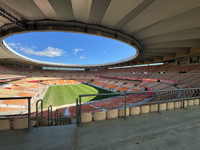
24.04.2025 © Junta de Andalucía 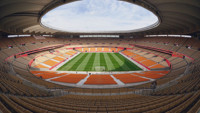
24.04.2025 © Sweet Fredo 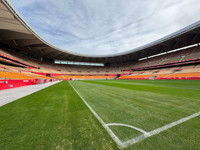
24.04.2025 © Junta de Andalucía 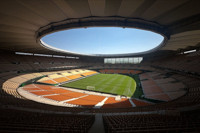
08.2025 © Deportivo Alavés 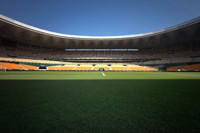
08.2025 © Deportivo Alavés 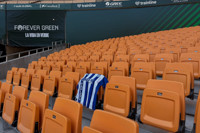
08.2025 © Deportivo Alavés 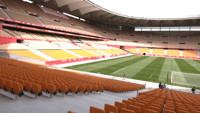
21.04.2025 © Junta de Andalucía 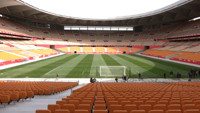
21.04.2025 © Junta de Andalucía 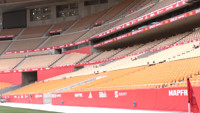
21.04.2025 © Junta de Andalucía 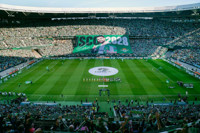
23.11.2025 © Real Betis Balompié 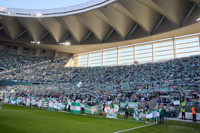
23.11.2025 © Real Betis Balompié 
18.10.2007 © Discober92 (cc: by-sa) 
2016 © Cruz y Ortiz Arquitectos 
2016 © Cruz y Ortiz Arquitectos 
2016 © Cruz y Ortiz Arquitectos 
2016 © Cruz y Ortiz Arquitectos 
2016 © Cruz y Ortiz Arquitectos 
2016 © Валерий Дед (CC BY 3.0) 
2016 © Валерий Дед (CC BY 3.0) 
2016 © Cruz y Ortiz Arquitectos 
03.06.2012 © Ángel Pedro 
07.05.2008 © Juan Jiménez Martínez (cc: by-nc-sa) 
2016 © Cruz y Ortiz Arquitectos 
2016 © Cruz y Ortiz Arquitectos 
2016 © Cruz y Ortiz Arquitectos
1999–2024:
Related news
2025
-
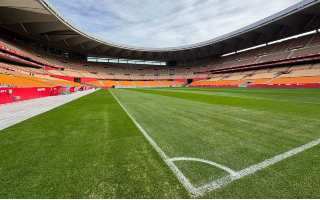
Spain: Copa del Rey will remain at La Cartuja for the coming years!
The Estadio de La Cartuja in Seville will continue to host the Copa del Rey final for the next three editions, starting from the 2025/2026 season. The next final is scheduled for Saturday, 25 April 2026.
-
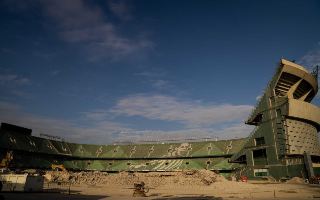
Spain: Betis facing longer exile? Villamarín rebuild slipping away from original plan
Real Betis are increasingly coming to terms with the fact that their “return home” will be delayed by at least one season. The club now openly admits that the scenario of three campaigns at La Cartuja is looking more and more likely.
-
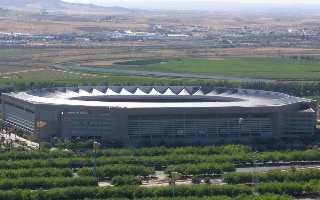
Spain: La Cartuja, the Spanish Wembley? World Cup works to cost €120 million
Spain is preparing for the 2030 World Cup, which it will host jointly with Portugal and Morocco. One of the eleven Spanish host stadiums will be Estadio La Cartuja in Seville – the third-largest venue in the country after Santiago Bernabéu and Metropolitano.
-
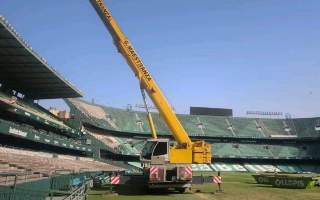
Spain: Major redevelopment begins at Benito Villamarín
On Tuesday morning, precisely at 9:00 a.m., one of the most important stages in the modernisation of the Benito Villamarín Stadium began. The demolition of the lower section of the Preferencia stand as well as the external staircases located between the Preferencia and Gol Sur stands got underway.
-
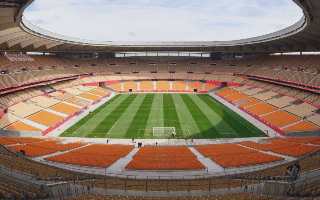
Spain: La Cartuja awaits Betis. Club prepares to move out
Real Betis Balompié is relocating to Estadio La Cartuja while Estadio Benito Villamarín undergoes reconstruction. Although the original plan foresaw a two-year absence from Heliópolis, the club is now open to a longer stay. Meanwhile, preparations for the first match are in full swing.
-

World: Race to host 2029 FIFA Club World Cup begins
Qatar has officially entered the race to host the second edition of the revamped FIFA Club World Cup, joining Spain and Brazil as candidates.
-
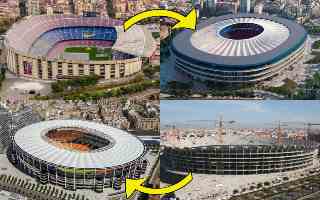
Spain: Dynamically evolving Spanish stadiums
A revolution is taking place in Spanish football stadiums. The latest video on the EstadiosDB channel, available in Spanish, takes viewers on a journey through arenas that have undergone profound transformations in recent years—not always spectacular, but always meaningful. From modest modernisations to major rebuilds, each stadium tells its own story.
-
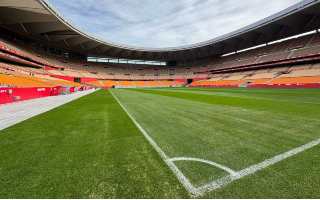
Spain: La Cartuja revived thanks to modernization and ecological transformation
La Cartuja has undergone a remarkable transformation both in terms of image and ecology. From a facility on the brink of ruin, it has become a venue for major sporting events. The successful organization of the Copa del Rey final confirmed its role as one of the most important stadiums in Spain.
-
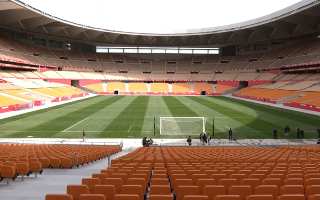
Spain: Betis prepares a difficult move to La Cartuja
"I'm coming with you," announces Betis its move to Estadio La Cartuja. The change will be a logistical challenge for the club, as Estadio Benito Villamarín is located at the other end of Seville. However, it will benefit those who have been waiting for a season ticket for years.
-
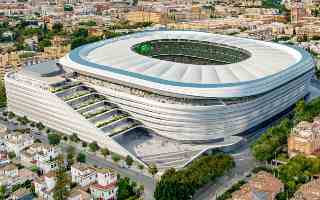
Spain: Major expansion of Estadio Benito Villamarín to begin this summer
After months of intensive planning and negotiations with local authorities, Real Betis is nearing the launch of its major stadium expansion. With the preliminary approval of the Planning Study now secured, the demolition of the current Preferencia stand is set to begin this summer.
-
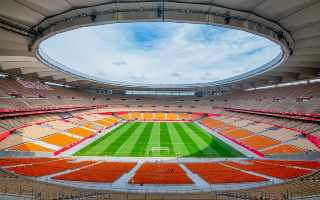
Spain: La Cartuja ready for Copa del Rey final – what does future hold for stadium?
FC Barcelona and Real Madrid will make their debut this Saturday at the renovated Estadio La Cartuja, which is set to become Spain’s third flagship venue, following Camp Nou and Santiago Bernabéu.
-
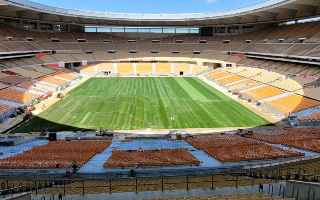
Spain: La Cartuja ready for Barça and Real
Just in time. Two weeks before the Spanish Cup final, in which Real Madrid and FC Barcelona will fight for the trophy, workmen have finished installing the turf at Estadio La Cartuja. With this, Seville's Olympic Stadium has officially ceased to be... an olympic stadium.
-
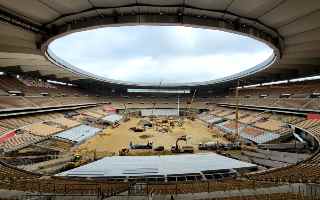
Spain: Spanish Cup final in April, but La Cartuja is still under reconstruction
44 days - that's how many days are left until the Copa del Rey final. Meanwhile, heavy equipment is still on the pitch of Estadio La Cartuja and on the as yet unfinished stands only the first seats are being installed. However, the stadium manager assures that everything is going according to plan.
-
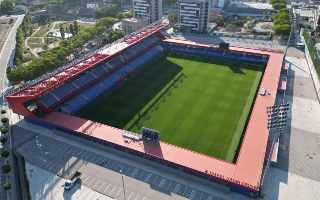
Spain: Another option for El Clásico – Estadi Johan Cruyff
According to information from Catalunya Ràdio, during Tuesday’s board meeting, FC Barcelona considered the possibility of hosting El Clásico at Estadi Johan Cruyff, regarded as the gem of Ciutat Esportiva in Sant Joan Despí.
2024
-
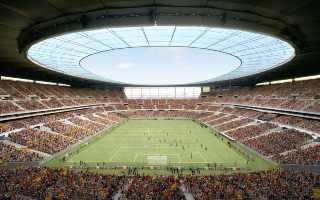
Spain: Work begins on second phase of Estadio La Cartuja expansion
Estadio La Cartuja enters its second phase of expansion, with seating capacity increasing to just over 70,000, making it the third-largest stadium in Spain after Santiago Bernabéu and Camp Nou.
-
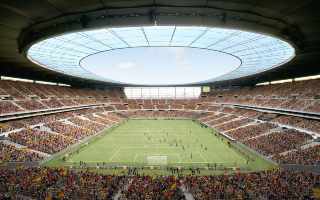
Spain: Changes around Estadio La Cartuja in Seville
Both the Seville City Council and the Government of Andalusia have decided to significantly upgrade the infrastructure around Estadio de la Cartuja. The main aim is to improve access to the arena and provide a better environment for visitors. To this end, a new car park and better road links will be created.
-

World Cup 2030: Spain selected 11 stadiums. Which ones are missing?
By July 31, Spain will present to FIFA the stadiums that, along with venues in Morocco and Portugal, will be part of the 2030 World Cup. The idea of proposing as many as 13 arenas was rejected, and ultimately, only eleven will be presented.
-

Spain: Preparations for renovation of La Cartuja. Venue worthy of 2030 World Cup?
The City Council has issued a permit for the redevelopment of La Cartuja into a five-star football stadium. The Urban Planning Board has also granted the necessary license, so construction will begin soon. The redevelopment will be carried out in two phases. What exactly will change?
-

World Cup 2030: The race for the final (and more) enters decisive phase
Recent weeks have been tumultuous for the candidate cities, but the next few weeks will be a real storm. Of the 14 Spanish arenas aspiring to host the World Cup, only 11 will be chosen. Bernabéu, Camp Nou and Grand Stade de Casablanca are vying to host the finals, although the Moroccan megastadion exists only on paper for now.
-

Spain: Betis to move out for Benito Villamarín modernization
It is the end of an era for Benito Villamarín, as the modernisation that will force Betis to move out is set to begin early next year. Further details of the project have been made public. The club have managed to partially calm the mood over the controversial project, bringing them closer to starting work.
 StadiumDB
StadiumDB